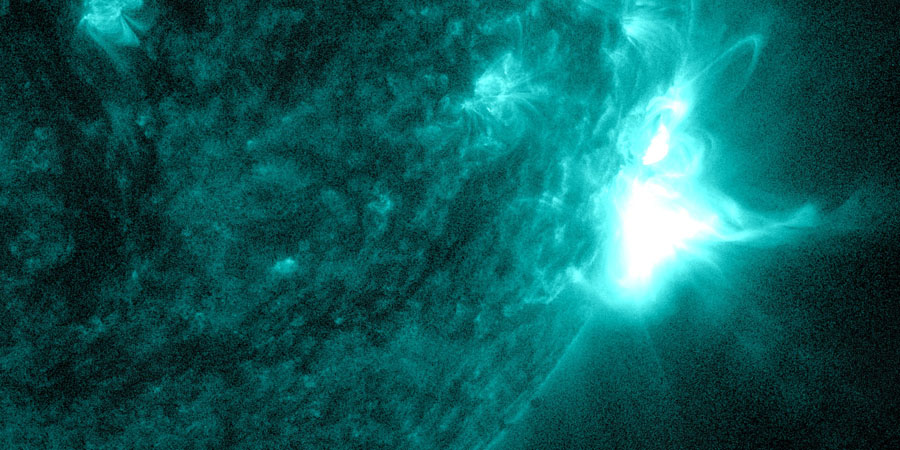M6.6 solar flare with earth-directed CME
Monday, 13 May 2024 18:46 UTC

Sunspot region 3664 is now close to the west limb and quieted down a bit compared to last week. Nonetheless it was the source of an eruptive long duration M6.6 solar flare (R2-moderate) that peaked at 9:44 UTC.
You'd expect the associated coronal mass ejection to be well of the Sun-Earth line but this was a very energetic and wide eruption which showed up as an asymmetrical full halo coronal mass ejection from Earth's point of view as you can see on the imagery from SOHO/LASCO below.
Today's M6.6 solar flare from sunspot region 3664 launched an energetic and wide coronal mass ejection which has a chance to arrive at Earth despite the region being close to the west limb. An asymmetrical full halo coronal mass ejection was launched which has a good chance to… pic.twitter.com/9EKDn99kWD
— SpaceWeatherLive (@_SpaceWeather_) May 13, 2024
Due to the high ambient solar wind speed we expect that the coronal mass ejection from this M6.6 solar flare doesn't slow down too much which means it could transit the Sun-Earth gap in less than two days. We expect a possible impact late tomorrow (14 May) or early on Wednesday (15 May). The arrival of this plasma cloud will be more of a glancing blow most likely but nonetheless it could spark a minor G1 geomagnetic storm with a bit of luck.
Thank you for reading this article! Did you have any trouble with the technical terms used in this article? Our help section is the place to be where you can find in-depth articles, a FAQ and a list with common abbreviations. Still puzzled? Just post on our forum where we will help you the best we can!
Latest news
Latest forum messages
Support SpaceWeatherLive.com!
A lot of people come to SpaceWeatherLive to follow the Sun's activity or if there is aurora to be seen, but with more traffic comes higher server costs. Consider a donation if you enjoy SpaceWeatherLive so we can keep the website online!

Space weather facts
| Last X-flare | 2025/01/04 | X1.85 |
| Last M-flare | 2025/01/22 | M1.3 |
| Last geomagnetic storm | 2025/01/04 | Kp5 (G1) |
| Spotless days | |
|---|---|
| Last spotless day | 2022/06/08 |
| Monthly mean Sunspot Number | |
|---|---|
| December 2024 | 154.5 +2 |
| January 2025 | 145.2 -9.3 |
| Last 30 days | 163.2 +45.8 |


